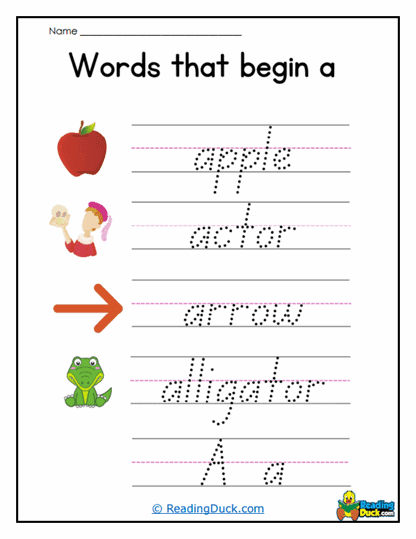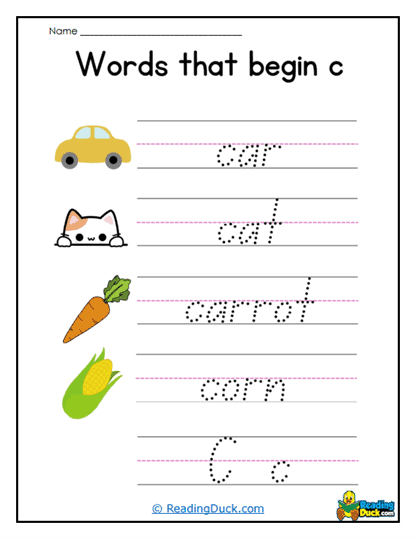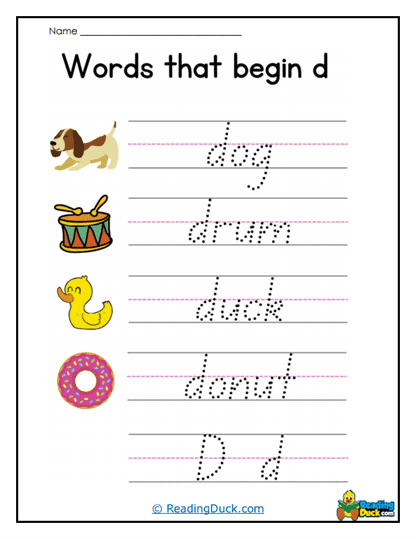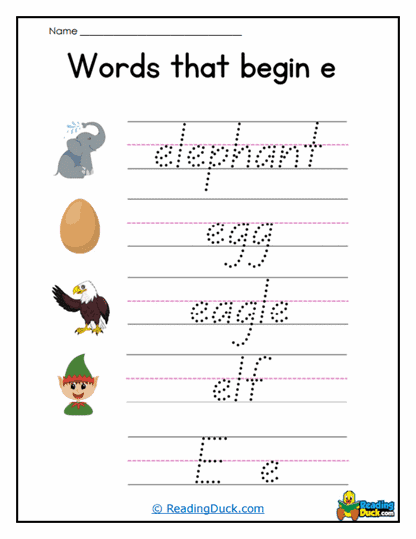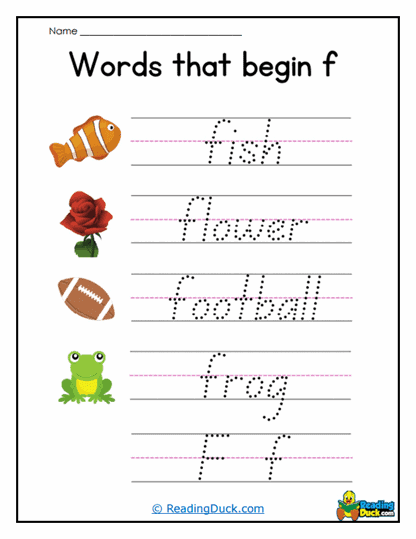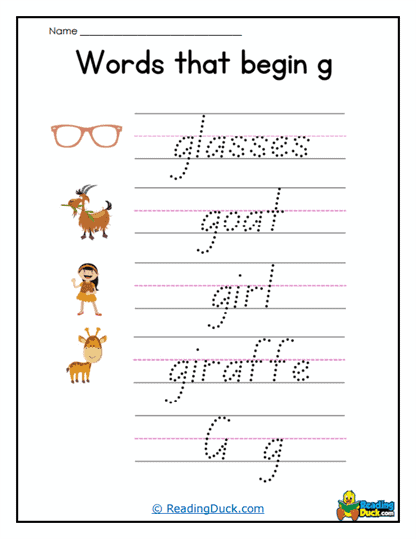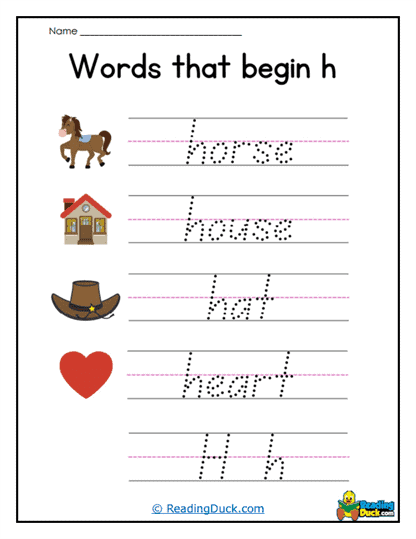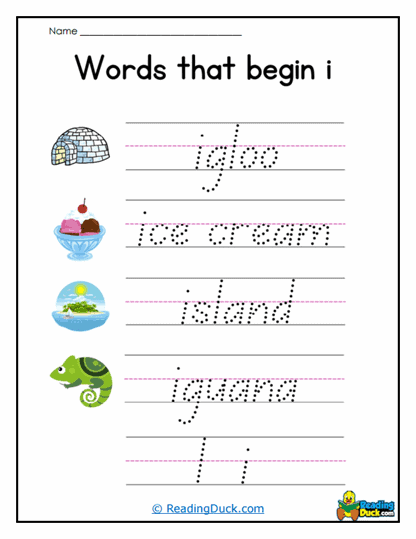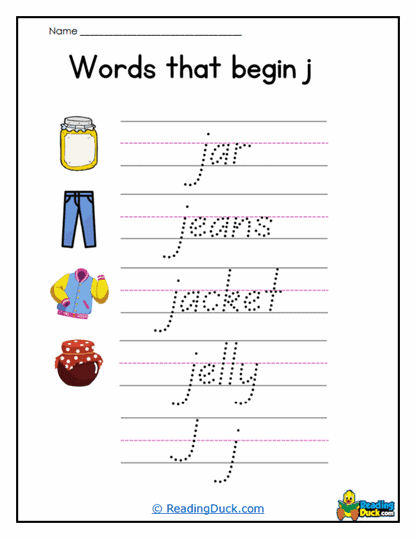Block Letters Worksheets
About Our Block Letter Worksheets
These worksheets will help support handwriting practice, specifically focusing on the fundamentals of letter formation and structure. Each worksheet provides guided practice in forming individual block letters-uppercase and lowercase-in a consistent and easy-to-follow format. They’re built with the needs of beginners in mind, especially younger students or those just beginning to practice their handwriting skills.
The purpose of these worksheets is to help students develop a steady and legible handwriting style by focusing on block letters, which are composed of simple, straight lines and easy-to-recognize shapes. These worksheets are ideal for early learners, enabling them to establish foundational writing skills that will support more advanced handwriting techniques in the future, such as cursive writing.
Using a structured approach, Block Letter Worksheets guide students through essential aspects of handwriting, such as proper letter spacing, line alignment, and uniformity, ensuring they gain confidence and consistency in each letter they form.
Layout and Structure
Each worksheet is crafted to maximize learning through a straightforward and engaging design. Here’s an overview of the key elements typically found in Block Letter Worksheets:
Guidance Lines - These worksheets typically include guidance lines that outline the top, middle, and bottom boundaries of each letter. These lines are crucial for helping students understand where each part of the letter should begin and end, giving them visual cues for proper height and alignment.
Letter Tracing - For beginners, many worksheets offer tracing options where letters are faintly outlined, allowing students to trace over each letter. This tracing feature is especially beneficial for building muscle memory, as it enables students to follow precise shapes and strokes.
Ample Letter Spacing - To avoid crowding and encourage clarity, block letter worksheets often feature ample spacing between letters. This spacing allows students to practice each letter without worrying about overlapping strokes, reinforcing neatness and precision.
Practice Lines - In addition to tracing, many worksheets provide blank lines where students can attempt writing letters independently, further building their confidence and reinforcing what they’ve learned from tracing.
What Are Block Letters?
Block letters are a basic form of print handwriting distinguished by their clear, structured shapes and easy-to-read design. Unlike cursive or other handwriting styles that use connected or stylized forms, block letters are created using individual, unconnected strokes. This approach makes them ideal for those new to writing, as it eliminates the complexity of flourishes and connections, focusing instead on simplicity and clarity.
Characteristics of Block Letters
Block letters are defined by their:
Straight Lines and Sharp Corners - Most block letters are composed of straight lines, with minimal curves. Letters like "A," "E," and "F" showcase this straight-line style, helping students understand letter proportions without complex angles.
Uniformity and Consistency - Block letters are uniform in appearance, ensuring each letter is distinguishable and consistent. This uniformity is crucial for beginner learners as it fosters pattern recognition and motor skills.
Readability - The primary appeal of block letters is their clarity, making them an excellent starting point for students who are just learning to form words and sentences.
Block letters are commonly used in educational and professional contexts, where legibility is essential. For students, mastering block letters not only helps in forming clear handwriting but also lays a foundation for other handwriting styles, such as cursive.
How These Worksheets Support Learning
Using block letter worksheets offers numerous educational benefits, particularly for young learners developing their handwriting. Let’s look at some of the key ways these worksheets support handwriting development:
1. Hand-Eye Coordination
Writing requires a delicate coordination between the eyes and hands. Block Letter Worksheets facilitate this development by encouraging students to follow straight lines and uniform patterns. Through repeated practice, students enhance their hand-eye coordination, learning to match their pencil movements with what they see, a skill that translates into more controlled and consistent handwriting.
2. Muscle Memory for Letter Shapes and Spacing
One of the greatest advantages of block letter practice is that it builds muscle memory-the ability of the muscles to remember the movements needed to form letters correctly. When students trace and repeatedly write each block letter, they become familiar with its shape, size, and proportion. This familiarity not only improves letter formation but also helps students recall these shapes effortlessly in future writing tasks.
Writing by hand requires fine motor control, which involves the coordination of small muscles, particularly those in the fingers and hands. Through consistent handwriting practice, students develop fine motor skills that are essential for tasks beyond writing, such as drawing, cutting, and other activities that demand precise hand movements.
3. Confidence in Legible Handwriting
For beginners, one of the biggest challenges in handwriting is achieving clarity and legibility. Block Letter Worksheets help students gain confidence as they practice each letter independently, seeing their progress and understanding how clear, legible writing should look. This confidence-building process is vital as it enables students to transition smoothly into more complex writing tasks with a sense of accomplishment and readiness.
4. Foundation for Advanced Handwriting Skills
Learning to write block letters serves as a foundational skill that eases the transition to other handwriting forms. Once students are comfortable with block letters, they are better prepared to take on the challenge of cursive writing or even more stylized print. Block Letter Worksheets reinforce core skills-such as consistency, line awareness, and letter spacing-that are applicable in any handwriting style.
5. Language Development and Written Expression
Practicing block letters isn’t solely about handwriting; it also promotes language development. By learning to form each letter carefully and consistently, students gain confidence in writing out words and sentences, enhancing their ability to express themselves through written language. As students move from individual letters to words and sentences, they improve their vocabulary, spelling, and sentence structure skills, which support broader language development goals.
Handwriting engages the brain differently than typing, enhancing cognitive abilities like memory and comprehension. Studies have shown that the process of physically writing each letter improves information retention and encourages active engagement with language. This is especially true for young learners who are still developing their memory and attention spans.
